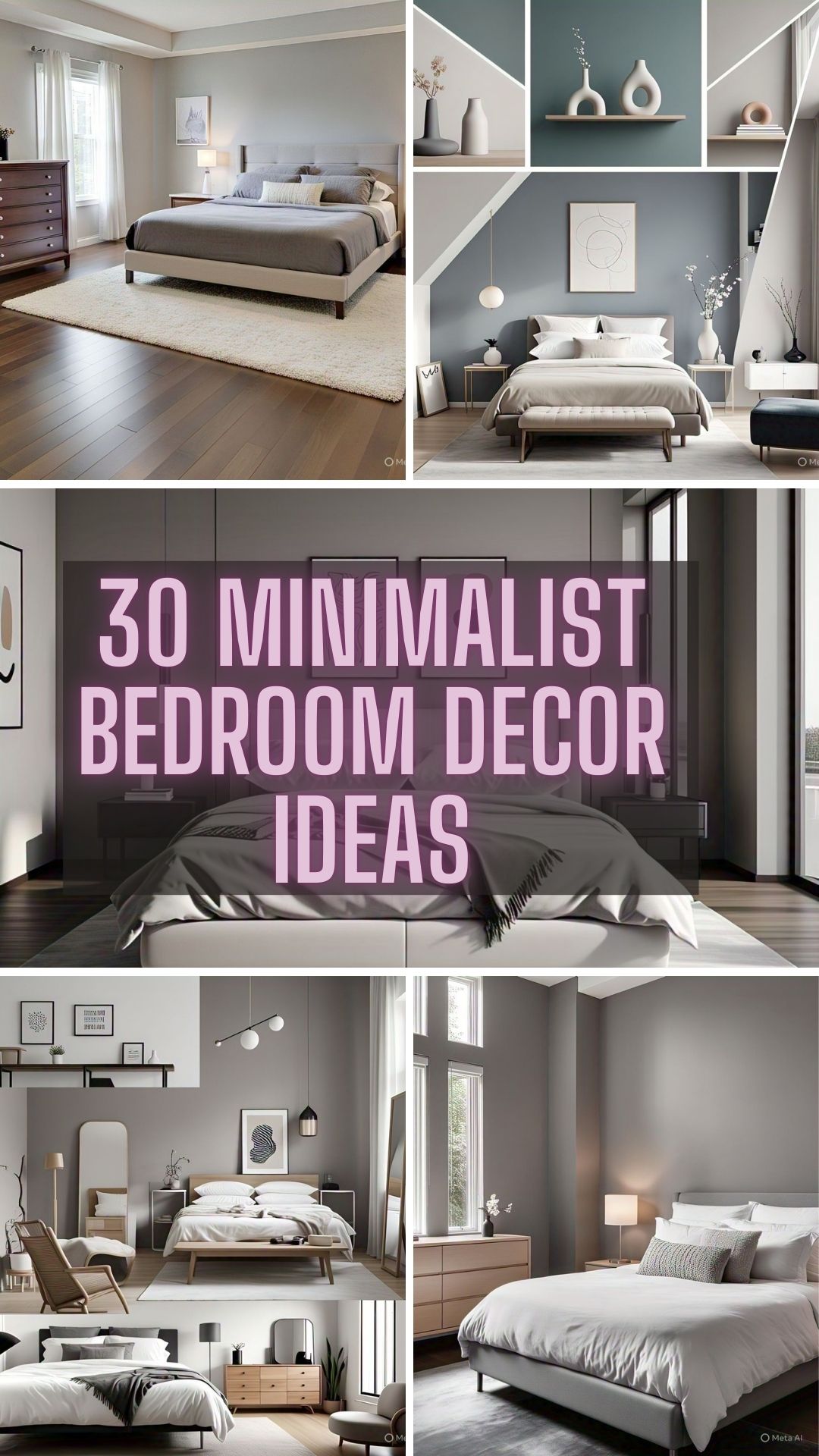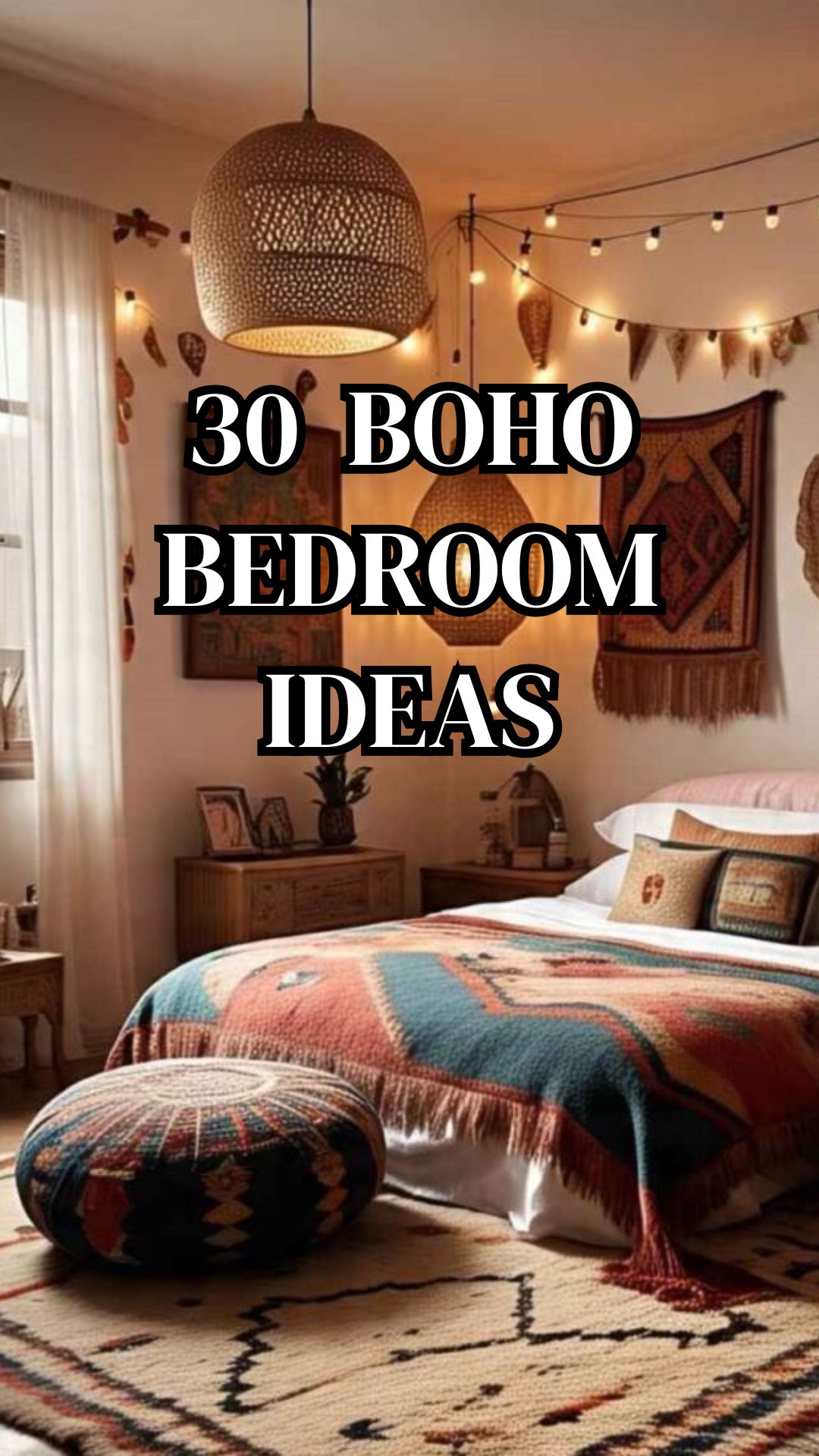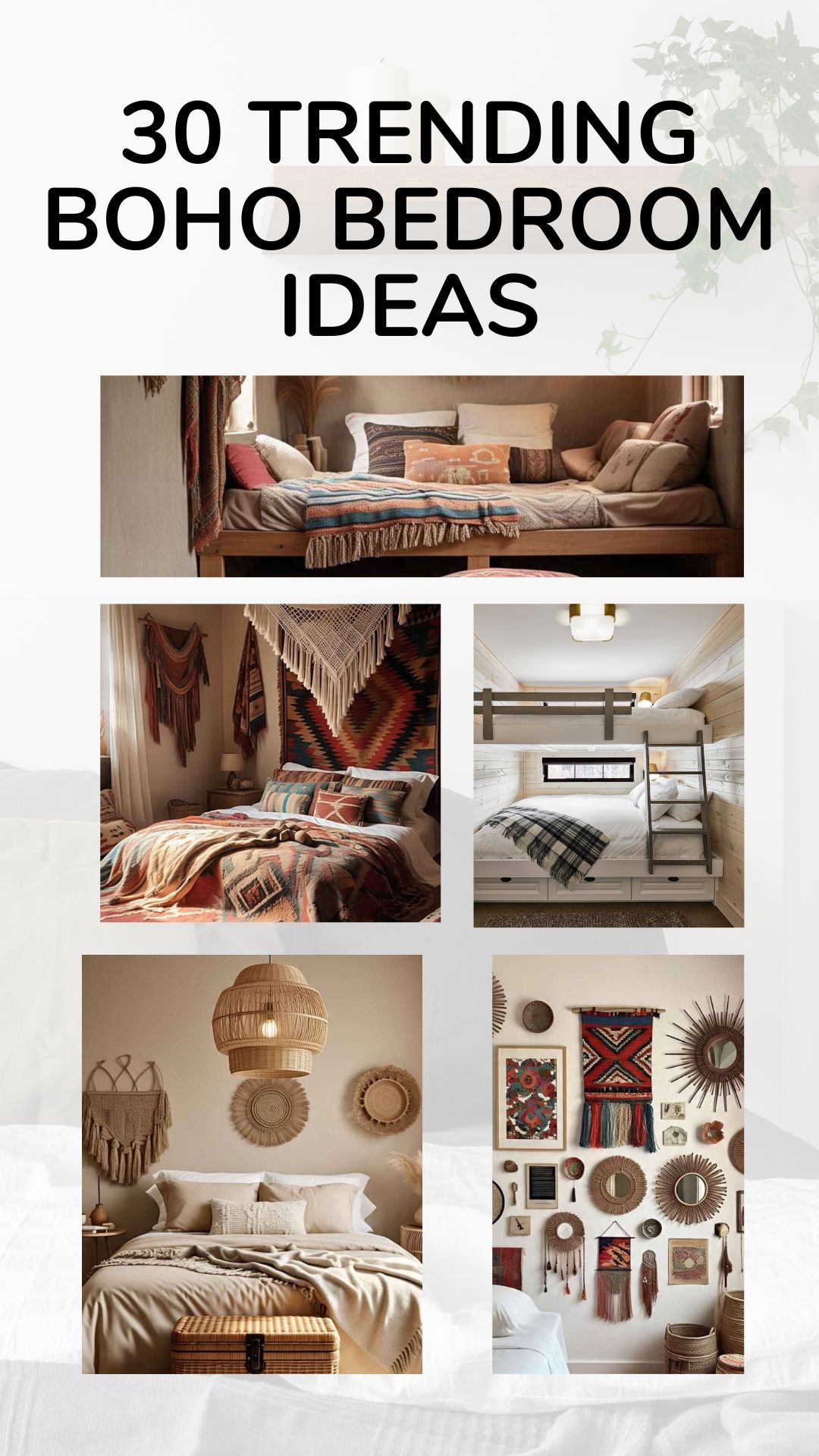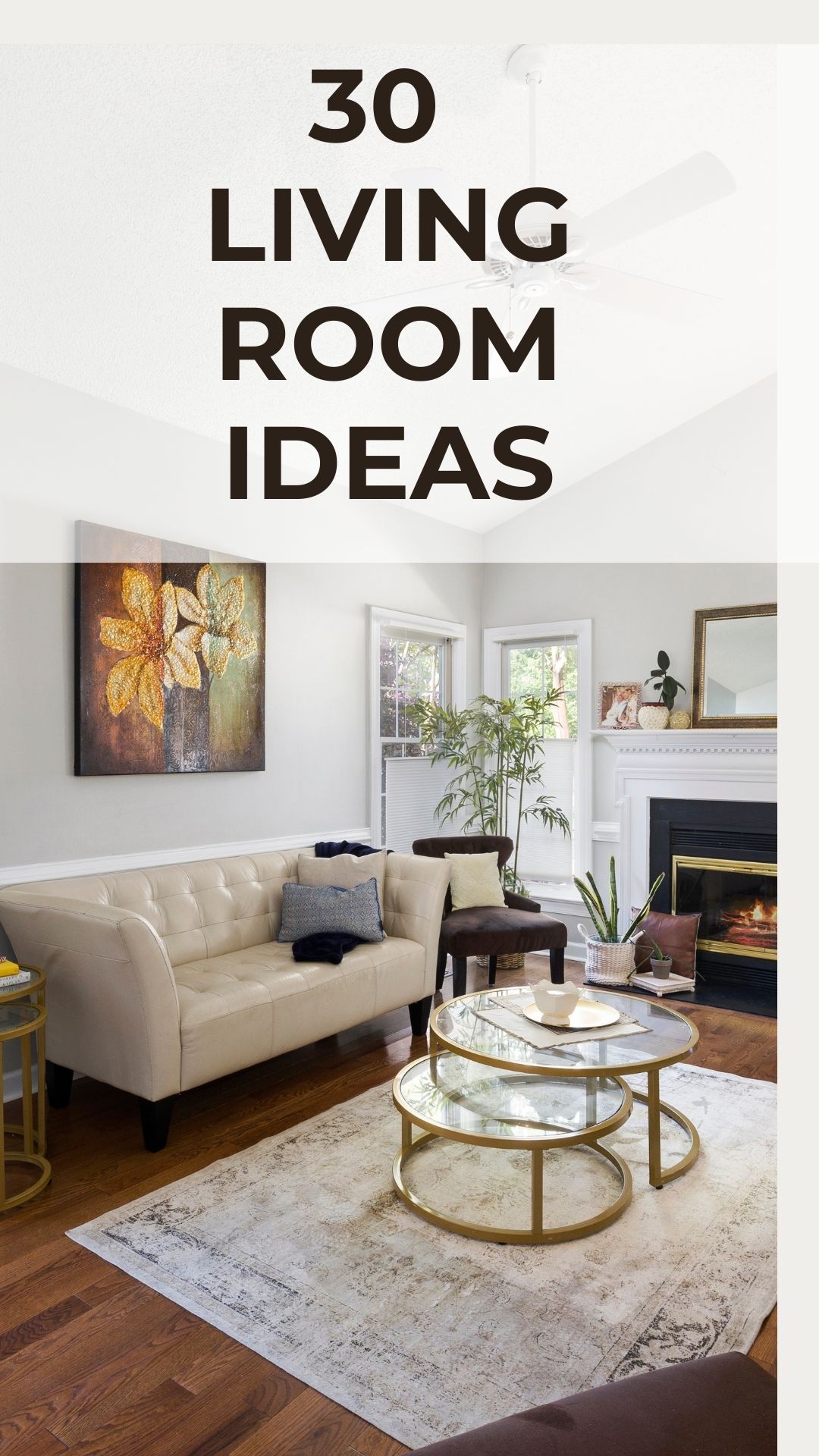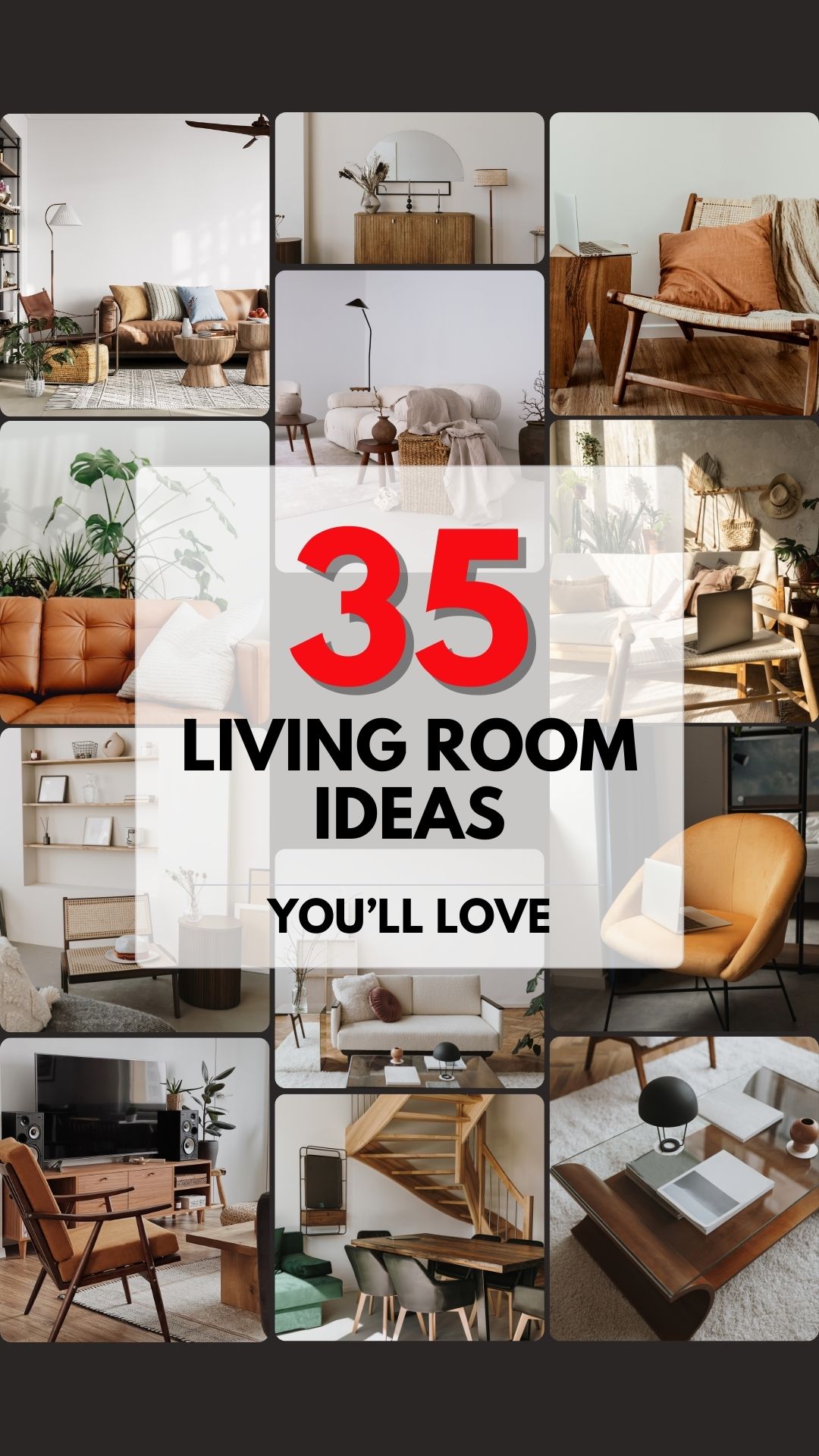Looking to transform your bedroom into a peaceful, clutter-free sanctuary? Minimalist bedroom decor is all about simplicity, functionality, and elegance. In this guide, we’ve curated 30 stunning minimalist bedroom decor ideas to help you embrace calmness without compromising on style. Whether you live in a studio apartment or a spacious home, these ideas can elevate your space effortlessly.
1. Neutral Color Palette
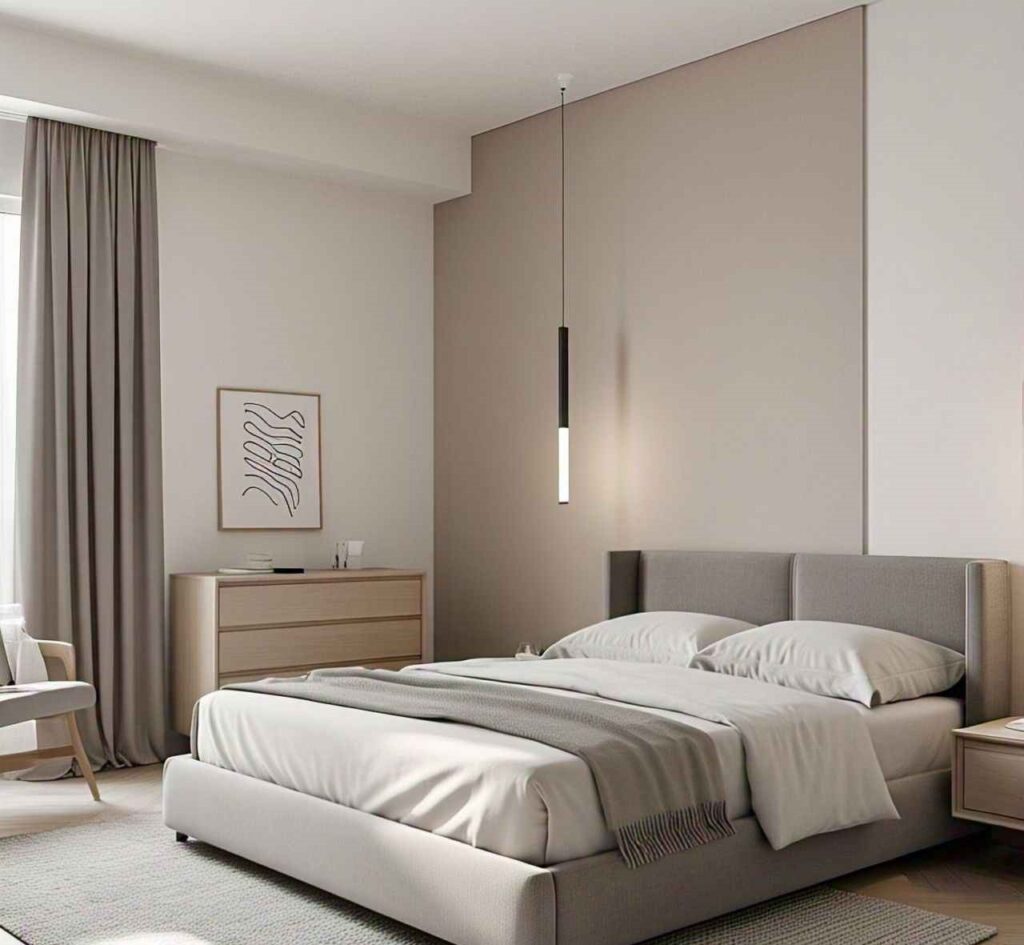
A minimalist bedroom starts with a neutral color scheme. Think white, beige, soft gray, and taupe. These shades promote tranquility and help reflect natural light, making your room feel more open and airy. Choose bedding, walls, and curtains in complementary tones to create harmony. Add subtle texture through a linen bedspread or a woven rug for depth.
2. Declutter and Simplify
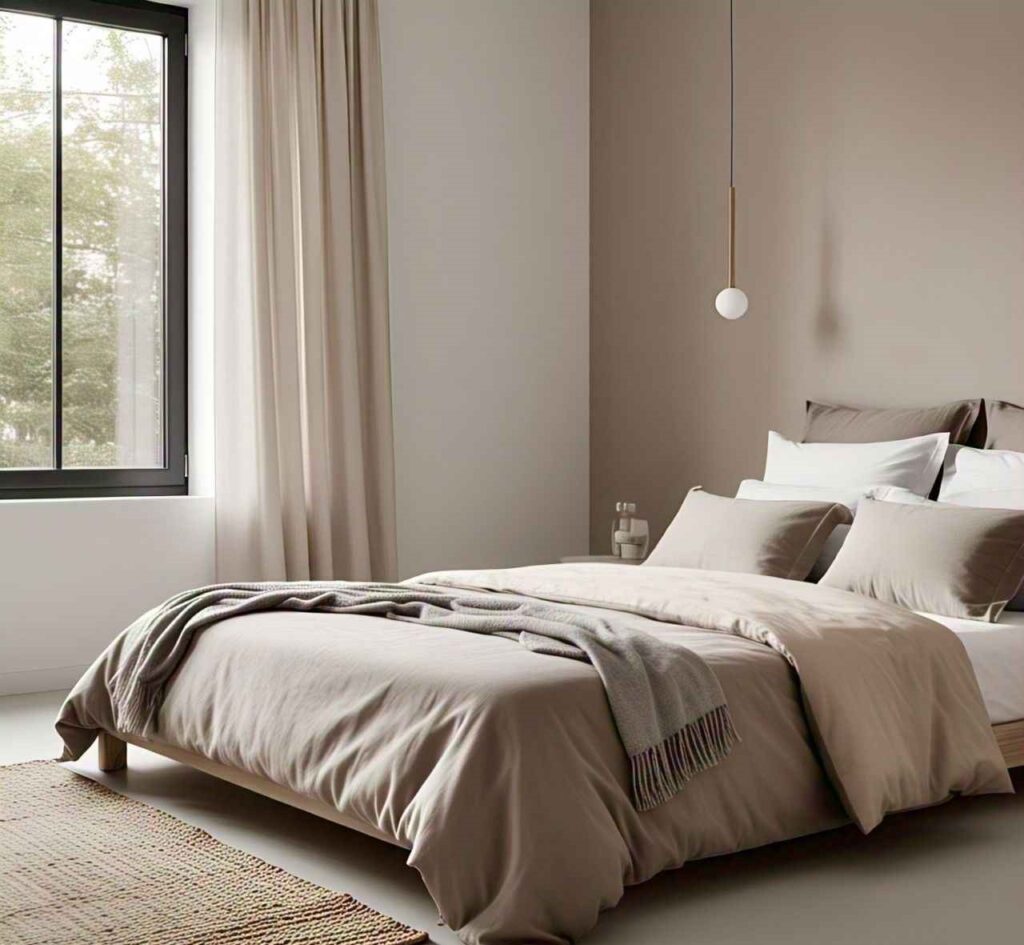
Before redecorating, eliminate unnecessary items. A minimalist bedroom should feel spacious and breathable. Keep only essentials: a bed, perhaps a side table, and a lamp. Use hidden storage solutions like under-bed drawers or built-in wardrobes to reduce visual clutter. The goal is to create a clean canvas that radiates calm.
3. Low-Profile Bed Frames

Choose a platform bed or a low-profile frame that sits close to the floor. These types of beds offer a grounded, streamlined look that fits perfectly within minimalist interiors. Opt for solid colors or raw wood finishes for a natural, understated appeal.
4. Functional Furniture Only
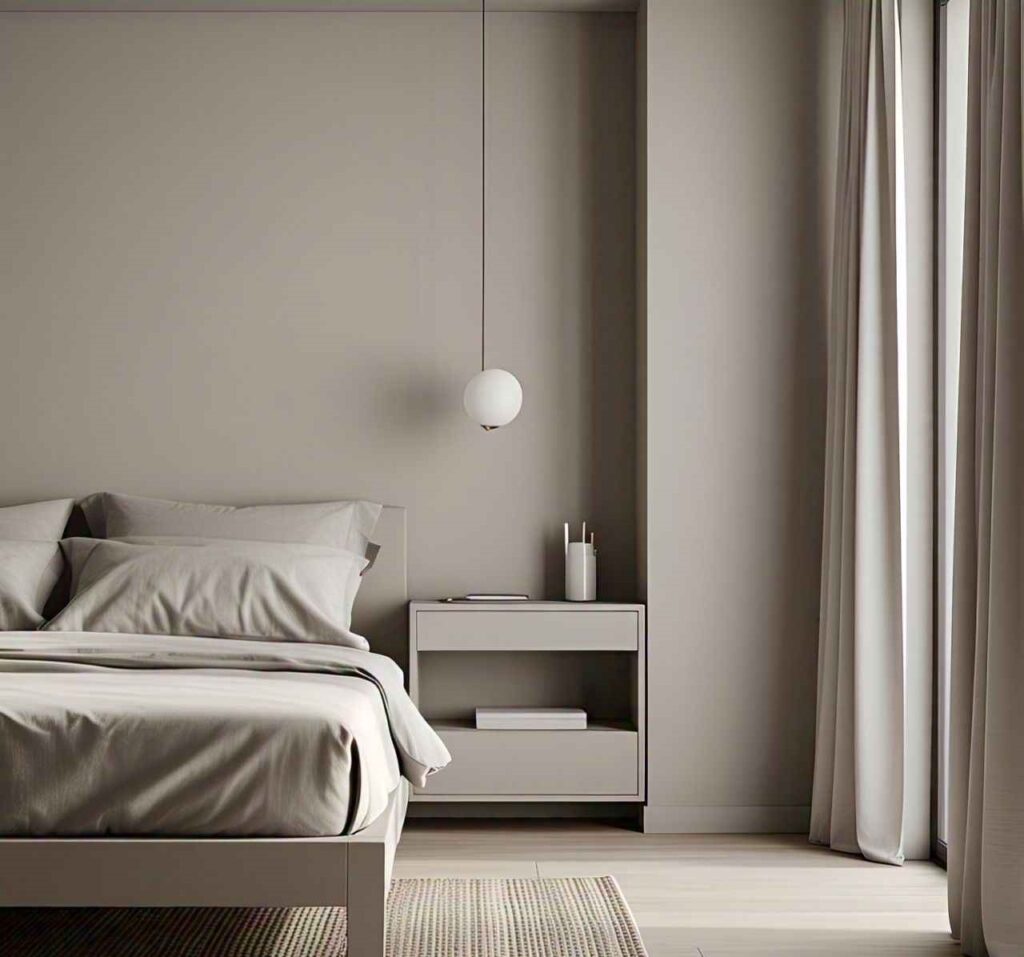
Select multipurpose furniture that serves a need. A small desk that doubles as a vanity or a bench with storage can maximize space while keeping the look cohesive. Avoid bulky or ornate pieces that overpower the simplicity of the room.
5. Hidden Storage Solutions

To maintain a minimalist aesthetic, integrate hidden storage options. Built-in wall units, beds with drawers, or nightstands with concealed compartments help store items without disrupting the clean lines of the space. This method keeps the room organized and visually serene.
6. Monochromatic Textures
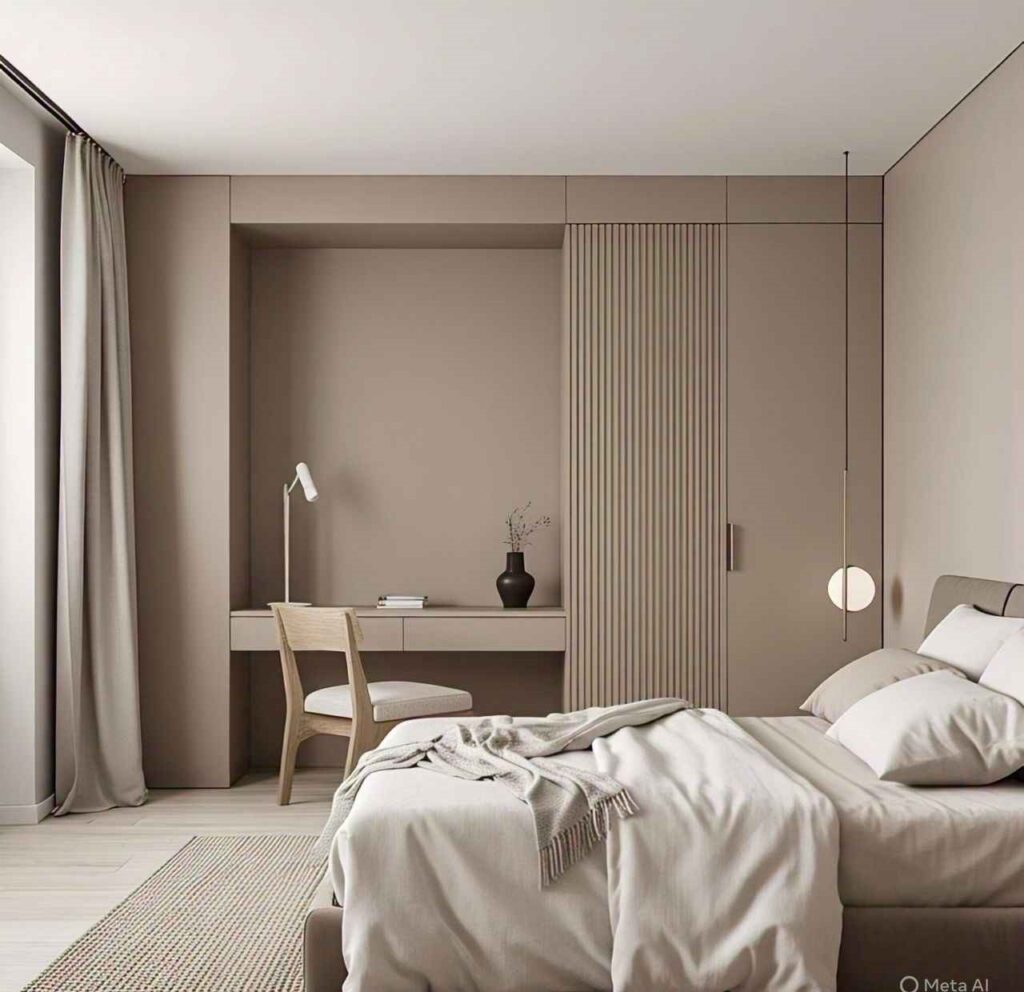
Even in a minimalist space, you can add visual interest by layering textures in the same color family. Think cotton sheets, knitted throws, and velvet cushions—all in shades of white or gray. The monochromatic approach ensures unity while keeping the space far from boring.
7. Accent Lighting
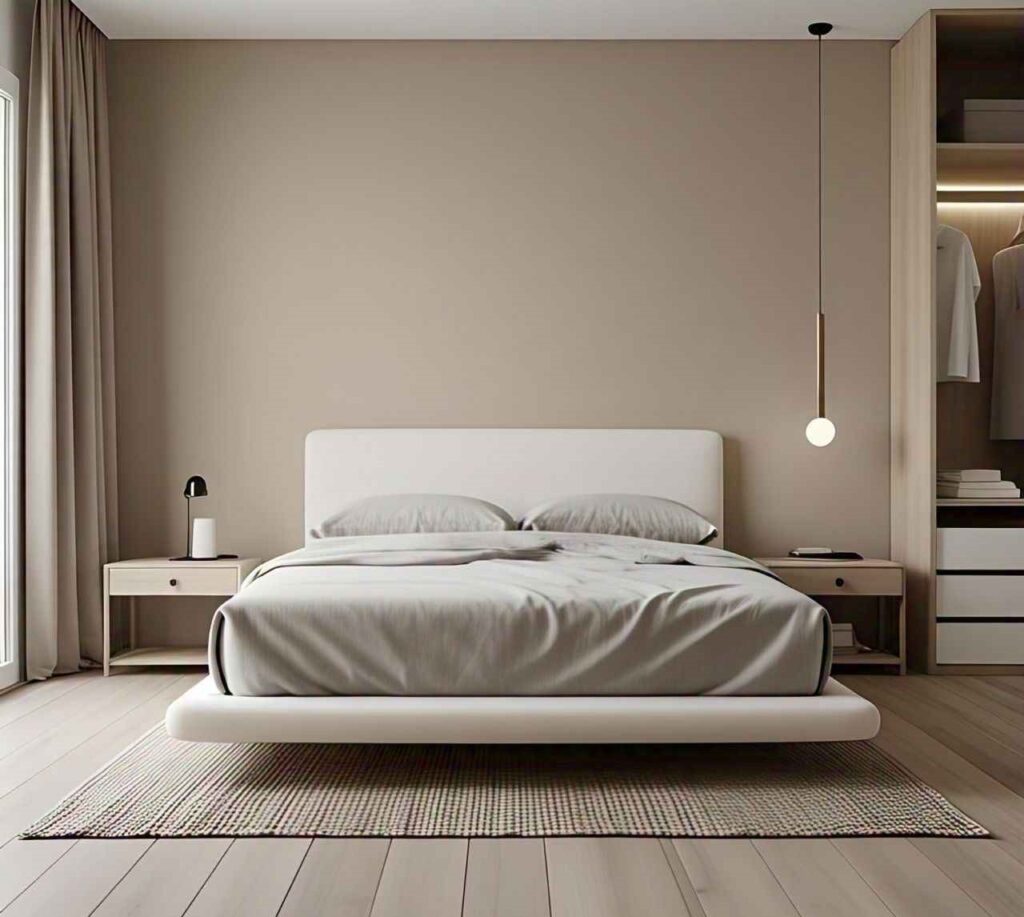
Lighting in a minimalist bedroom should be soft and ambient. Consider wall-mounted sconces, hanging pendant lights, or LED strips behind a headboard. Keep the fixtures sleek and simple to complement the clean lines of the space. Warm white bulbs enhance the cozy, serene vibe.
8. Bare Windows or Light Curtains
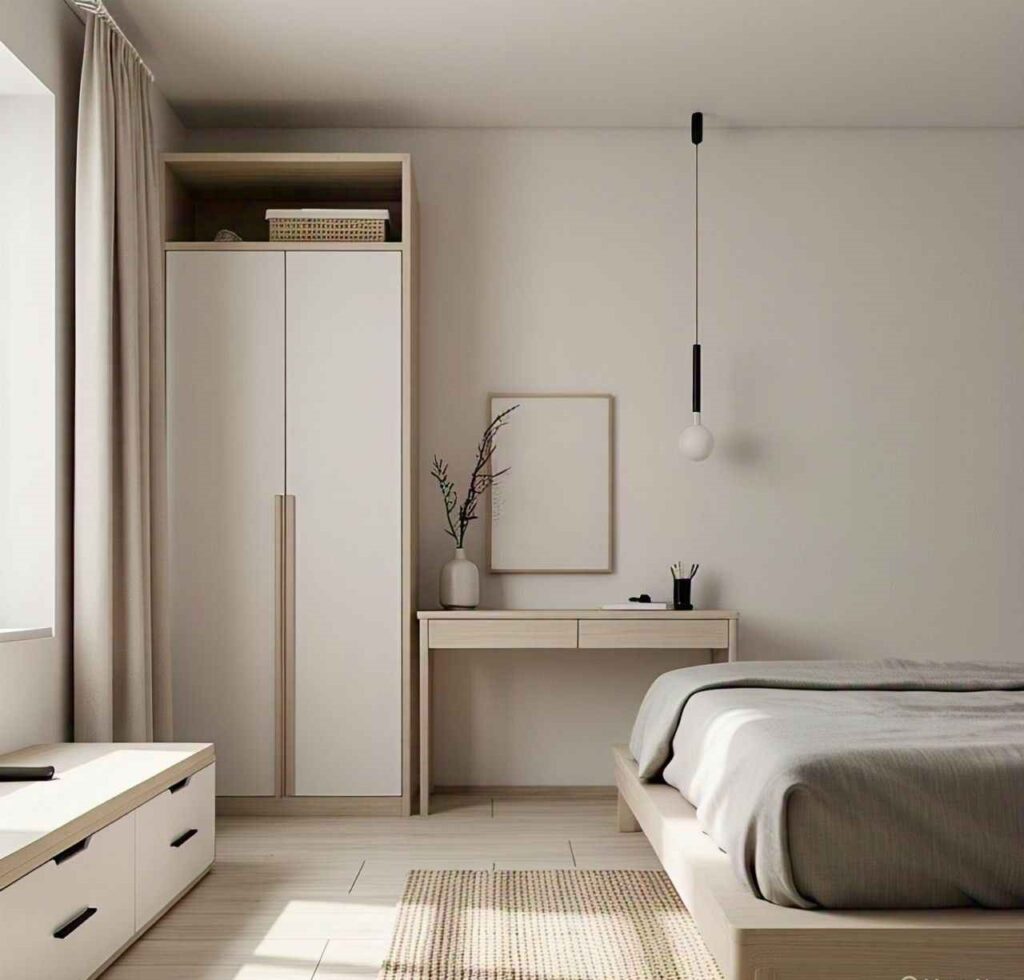
Skip heavy drapes and opt for sheer or linen curtains in light tones. Alternatively, go bare and embrace natural sunlight, especially if privacy isn’t a concern. Minimal window treatments enhance openness and draw attention to architectural elements or scenic views.
9. Statement Art Piece
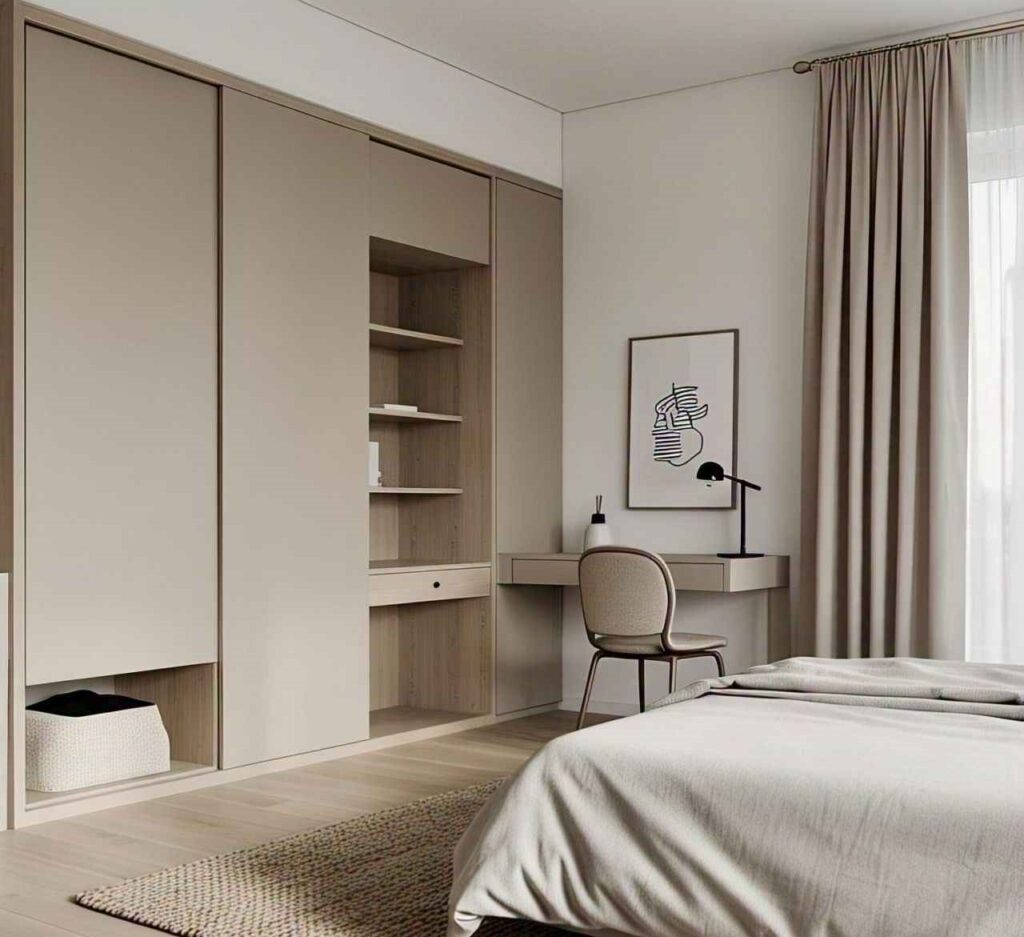
Rather than cluttering walls with multiple frames, choose one large statement art piece. Go for abstract designs, black-and-white photography, or minimalist line art. This creates a focal point without overwhelming the room.
10. Natural Materials
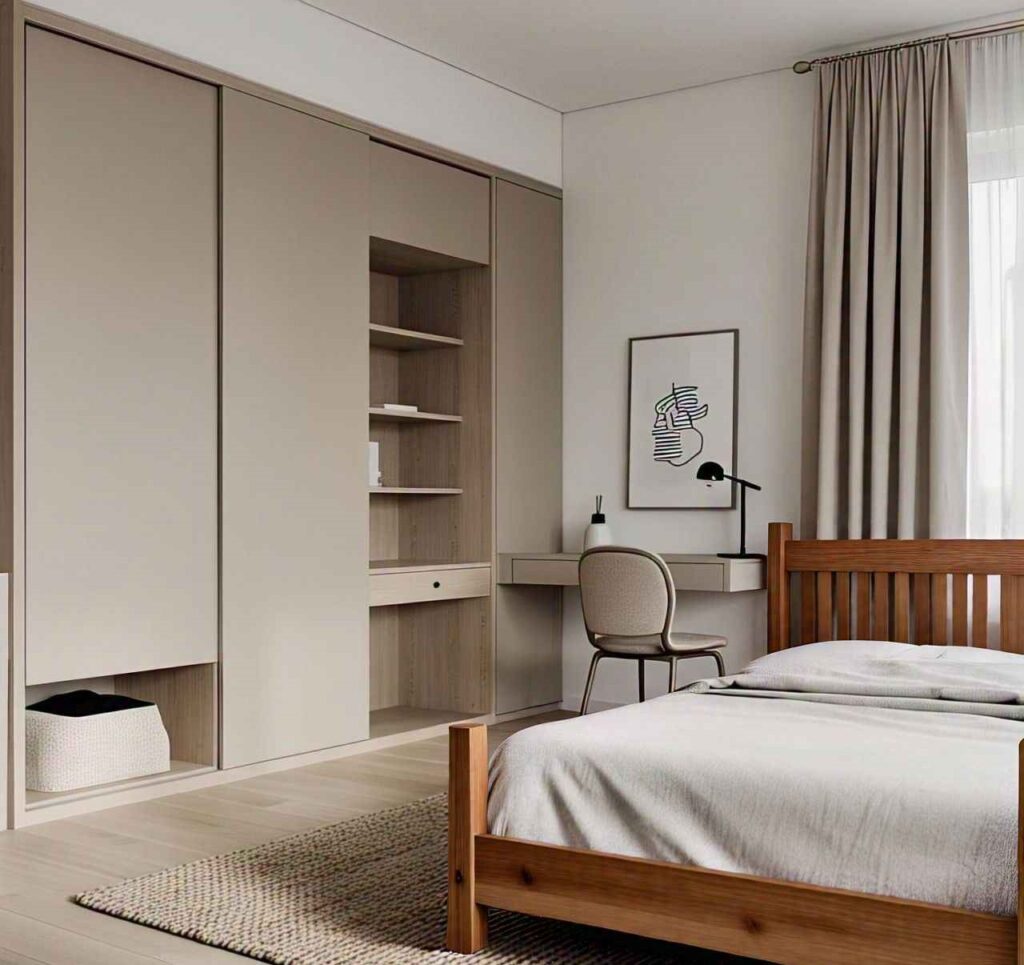
Bring in elements like wood, cotton, wool, or stone. A wooden bedframe, a stone lamp base, or a woolen rug can add warmth and texture while staying true to the minimalist theme. These materials provide a connection to nature and support a calming atmosphere.
11. Floating Nightstands
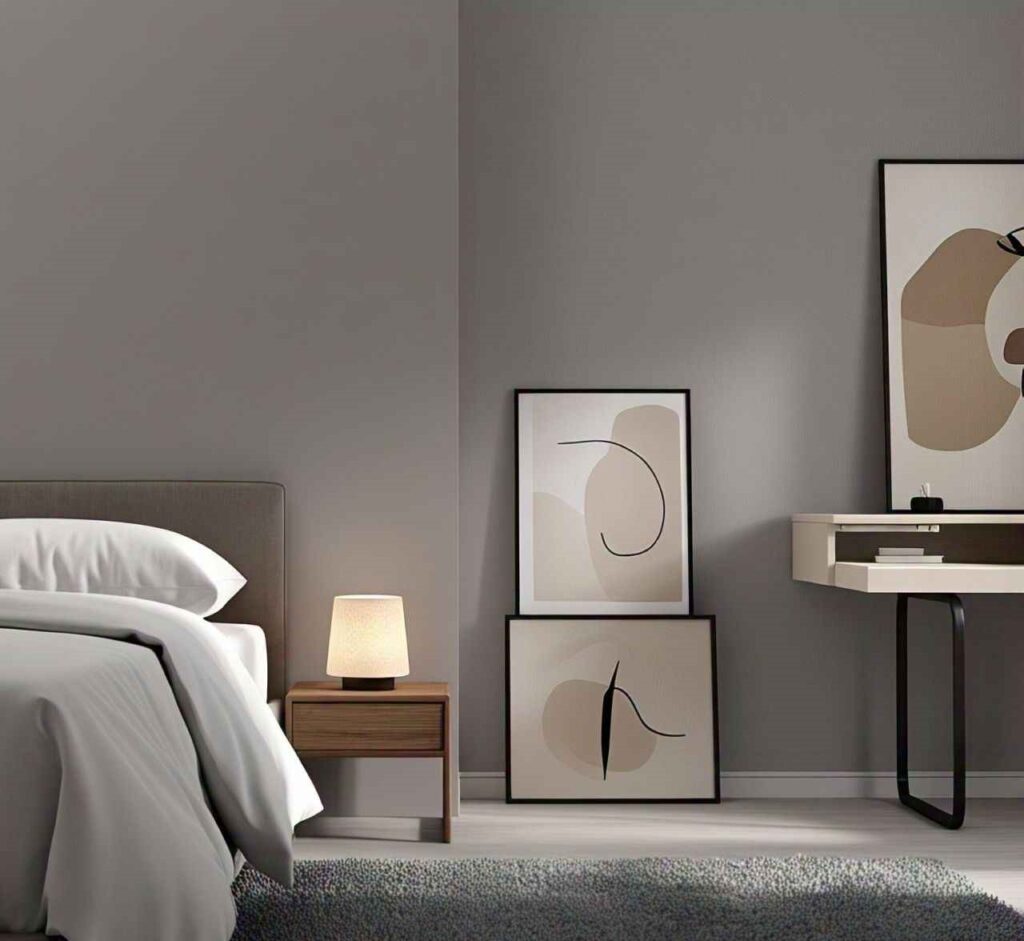
Floating nightstands are perfect for minimalist spaces. They appear lighter than bulky furniture and keep floor space open. Choose a design with a small drawer to maintain function without compromising on aesthetics.
12. Minimal Wall Decor
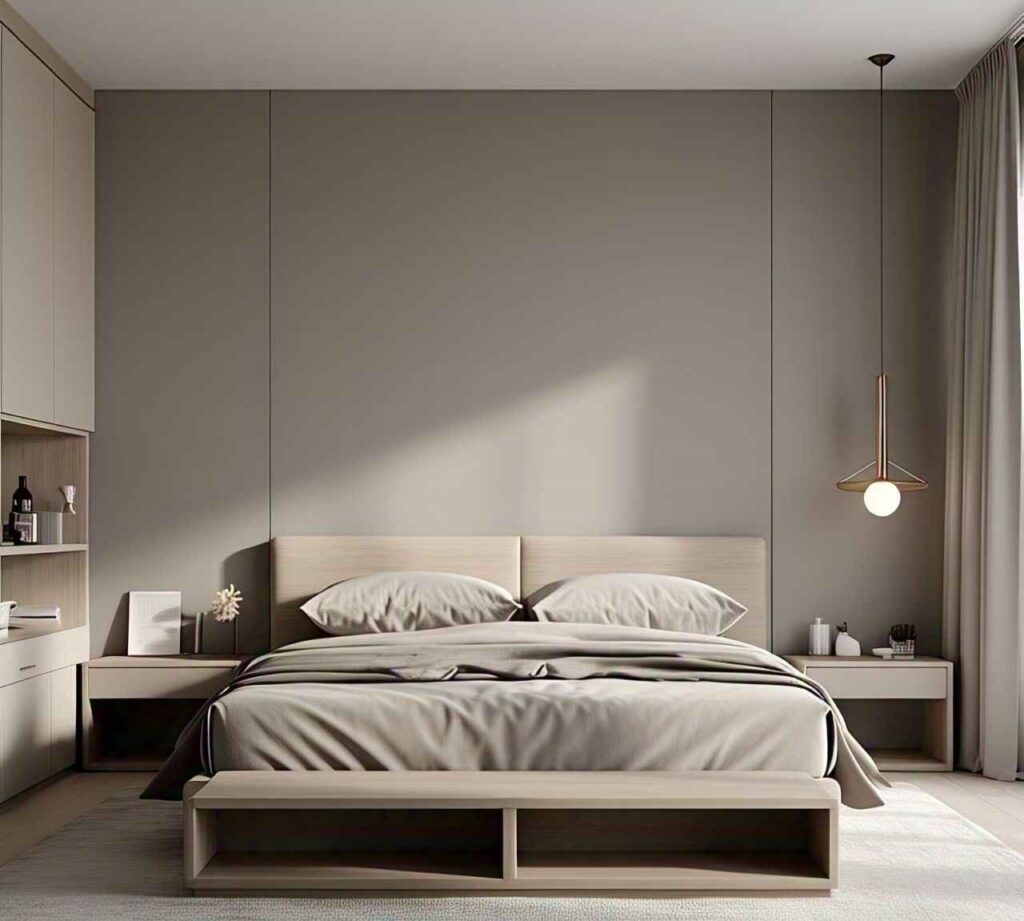
Instead of a gallery wall, go for one or two carefully selected items—a hanging plant, a single piece of art, or a wall mirror. These elements give character without cluttering your visual space.
13. Symmetrical Layout

Balance is key in minimalist design. Symmetry provides a sense of order and calm. Position matching lamps on both sides of the bed or mirror your décor elements for a harmonious look that feels intentional and composed.
14. Earthy Tones and Accents
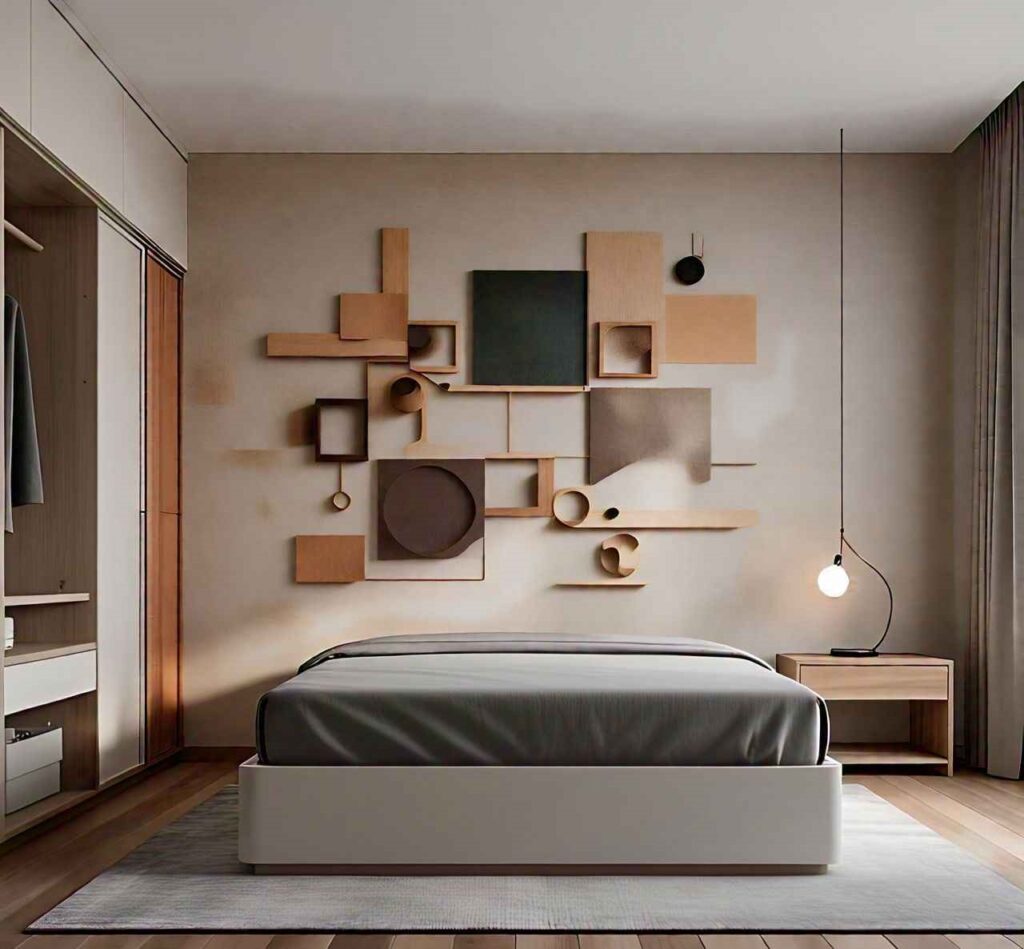
While neutrals are essential, a touch of earthy tones like terracotta, olive, or clay can add depth. Use them in throw pillows, artwork, or vases to warm up the space without making it feel busy.
15. Understated Bedding
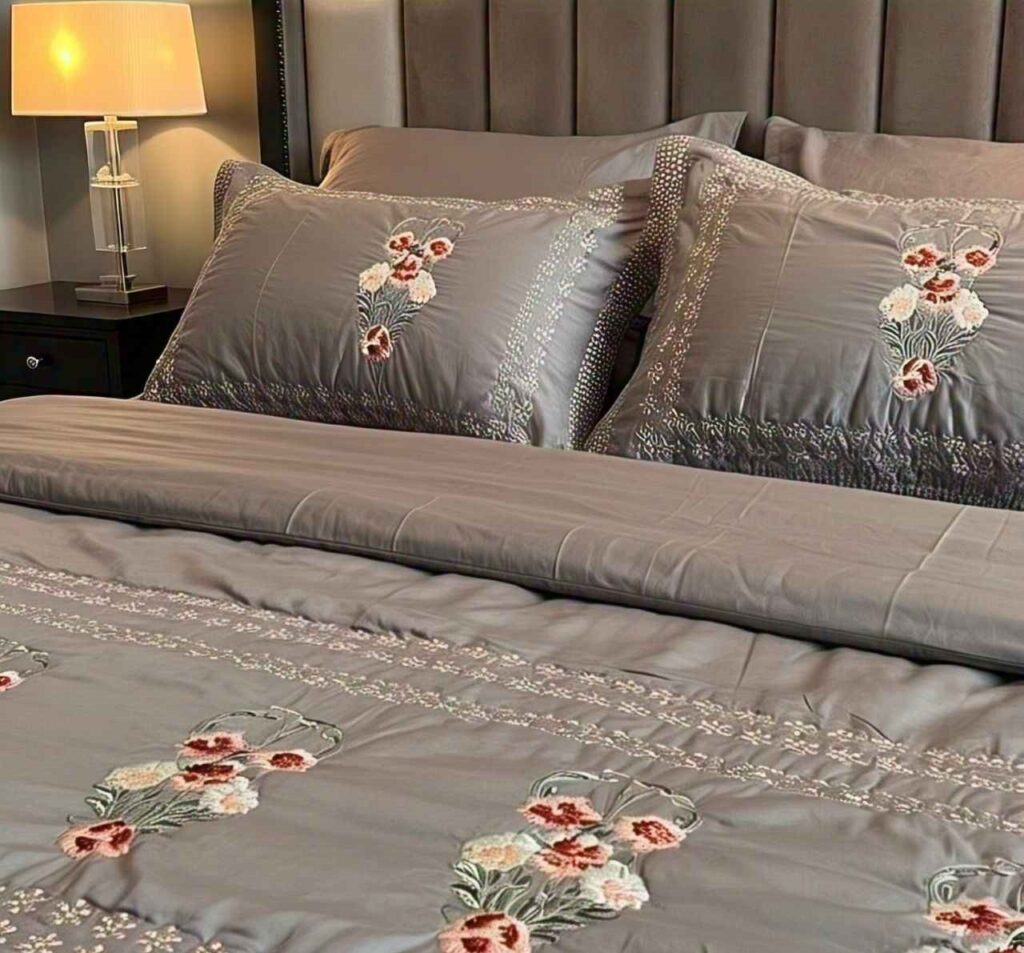
Stick with high-quality, simple bedding. Think crisp white sheets, a solid color duvet, and one or two pillows. The key is to avoid patterns and flashy designs. This keeps the bed looking fresh, clean, and inviting.
16. Greenery in Moderation
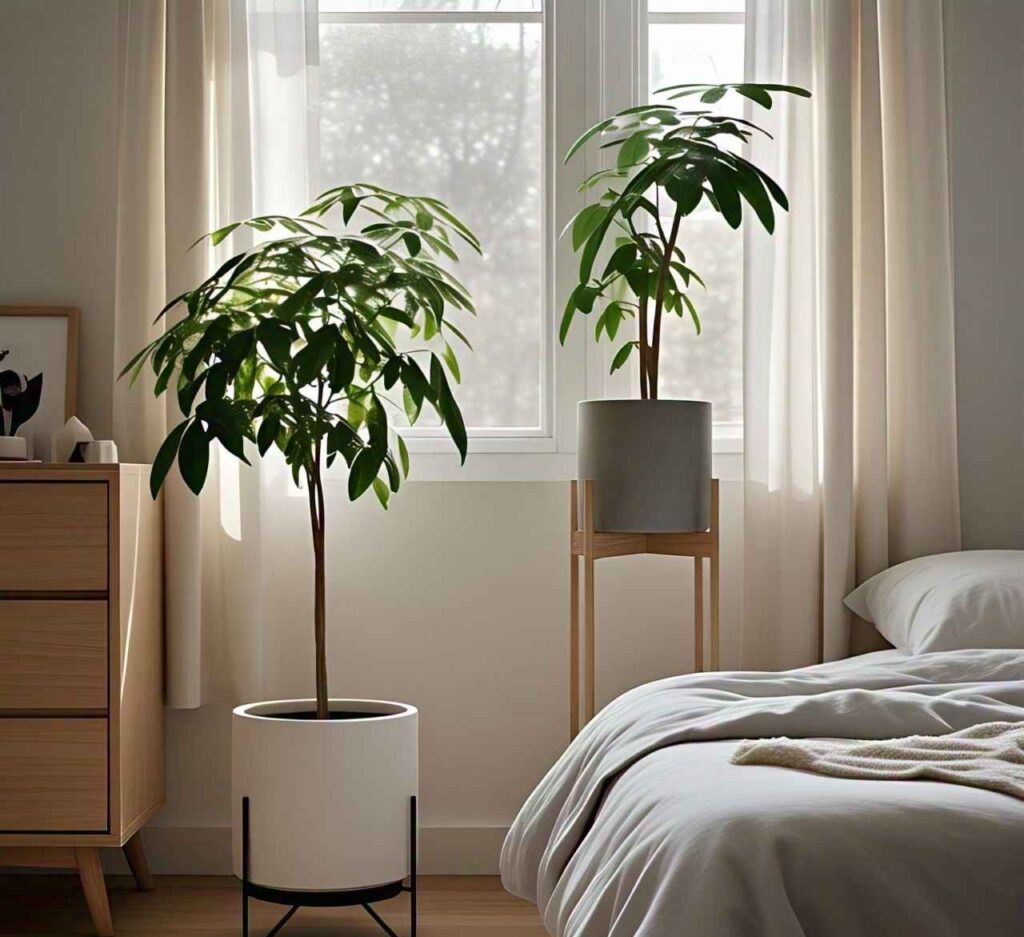
A single potted plant or a small indoor tree can bring life into a minimalist bedroom. Choose low-maintenance greenery like a snake plant or peace lily. Avoid overcrowding; one or two plants are enough to create a fresh vibe.
17. Geometric Elements
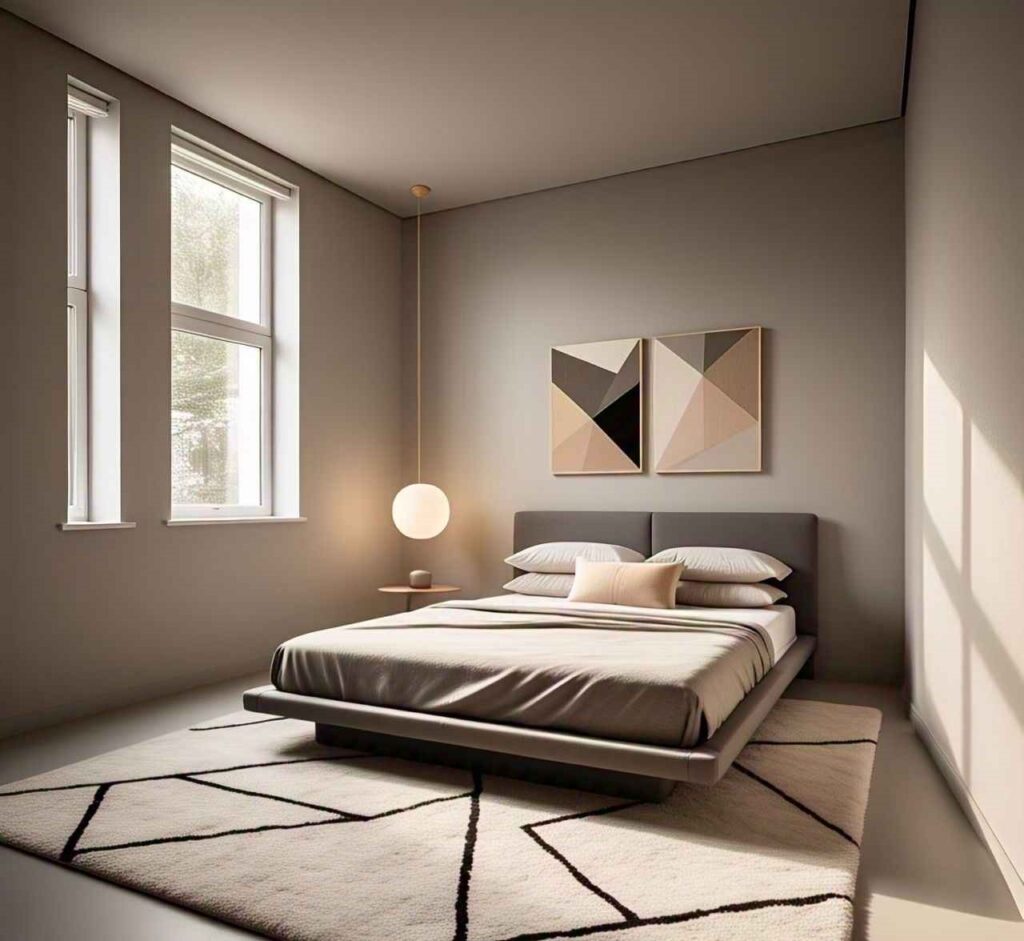
Subtle geometric patterns in rugs, lamps, or art can add visual structure to a minimalist bedroom. Stick to one or two geometric accents in muted colors to maintain simplicity and cohesion.
18. Hidden Technology
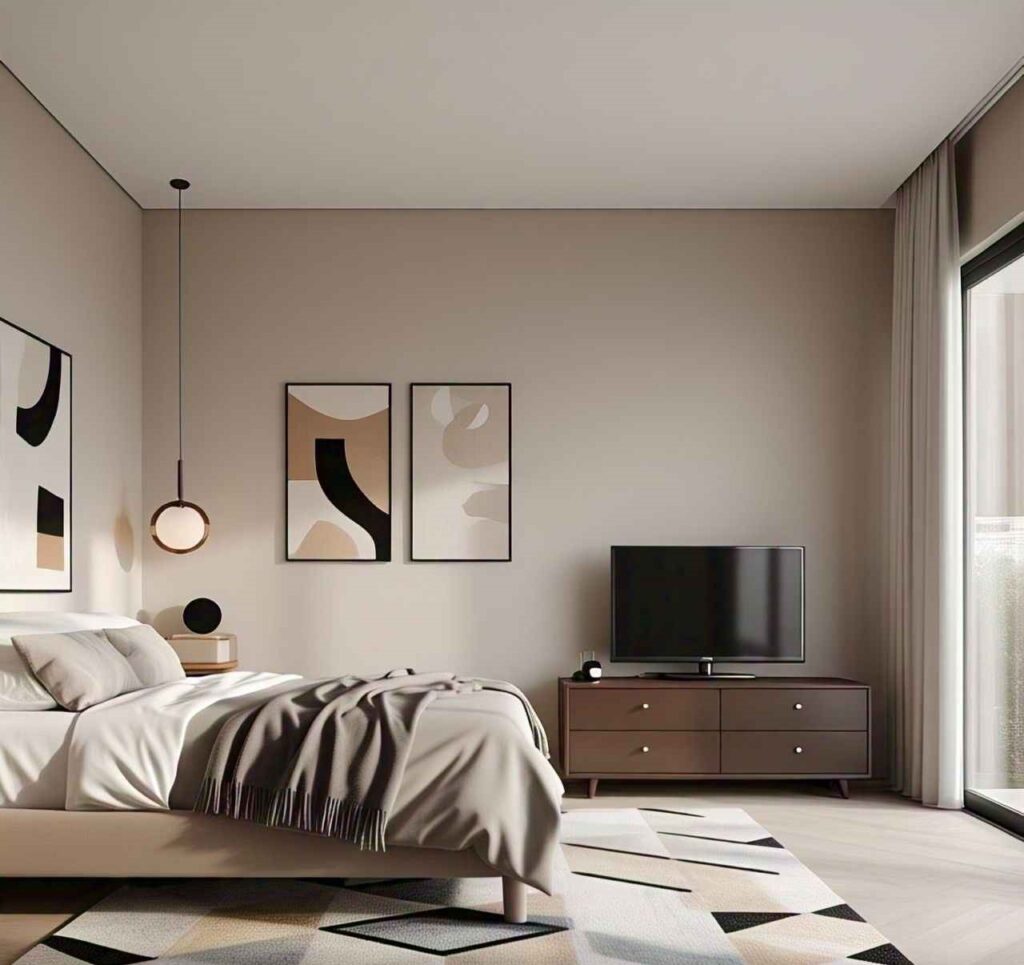
In a minimalist setting, tech should be invisible when not in use. Choose wireless speakers, use cord organizers, or mount the TV flush to the wall. This reduces distraction and helps keep the space serene.
19. Accent Wall in a Soft Tone
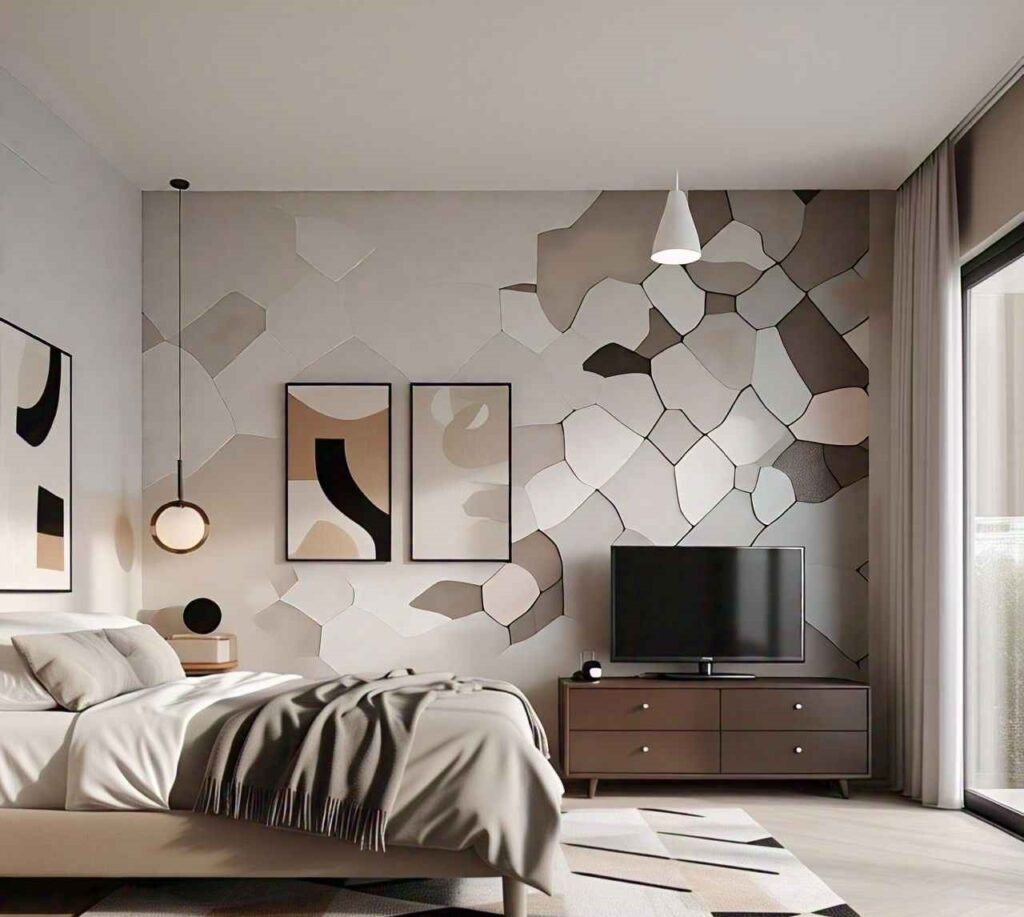
A single accent wall in a light, calming shade—like sage green or blush—can add subtle contrast without overpowering the room. Use paint, wood panels, or textured wallpaper to create a soft feature wall.
20. Sleek Mirrors for Light and Space
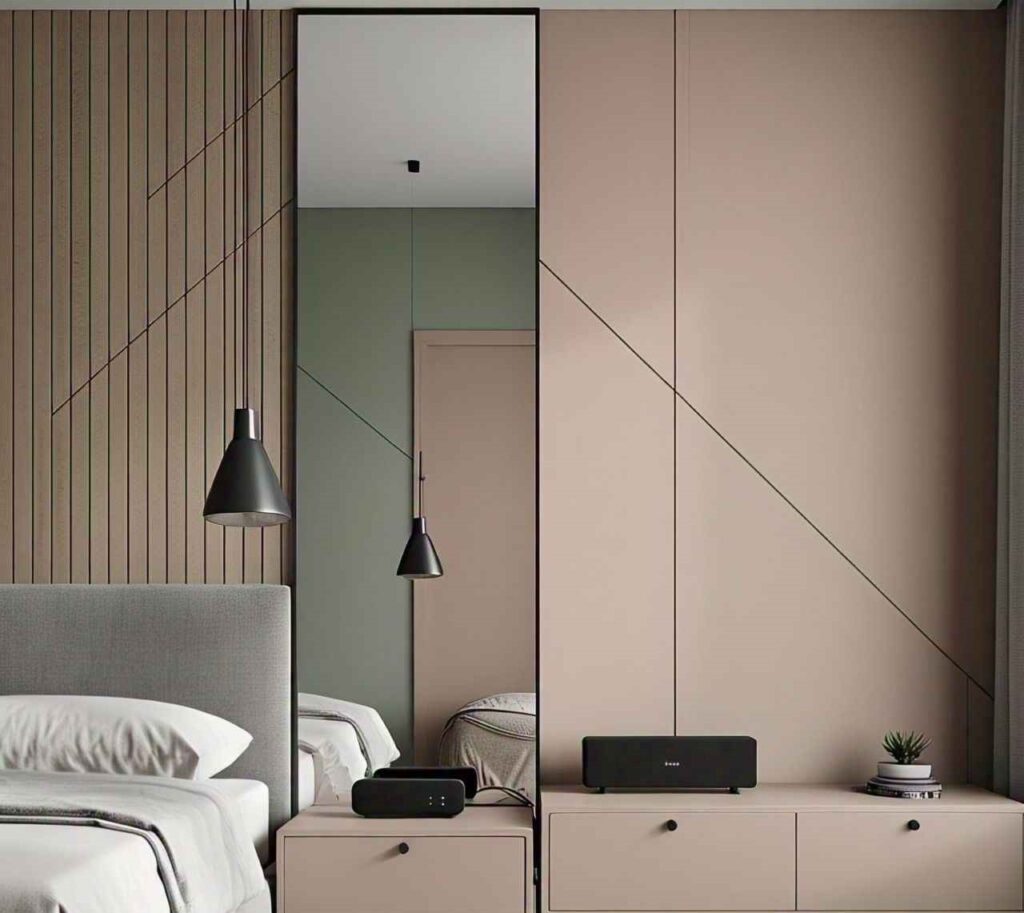
Mirrors are a great way to make a room feel larger and brighter. Opt for a minimalist frame or frameless design. Lean it against the wall or hang it strategically to reflect natural light and create the illusion of space.
21. Scandinavian-Inspired Touches
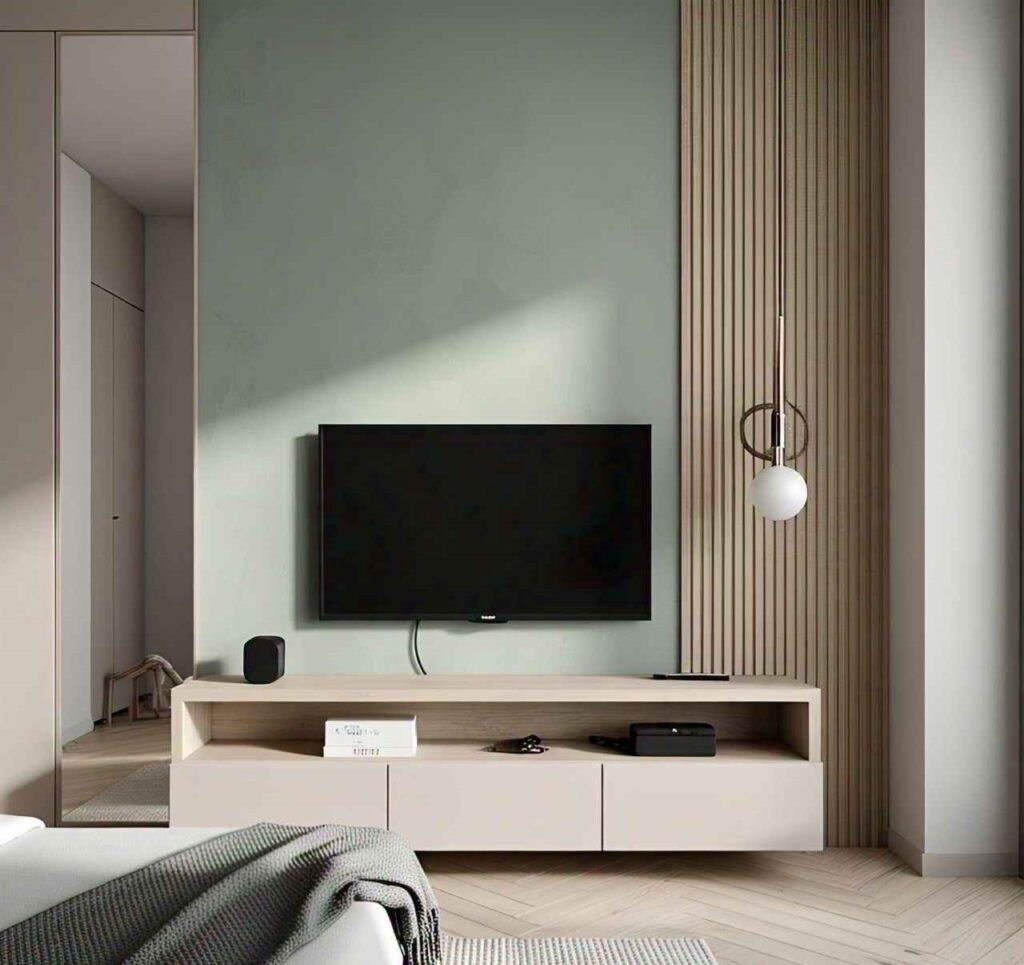
Scandinavian minimalism focuses on functionality and comfort with a clean aesthetic. Add light wooden furniture, a wool throw, or a neutral area rug to create that hygge vibe. Keep lines simple and materials natural, balancing beauty and usability.
22. Sliding Doors or Curtains for Closets

Replace swinging closet doors with sliding panels or minimalist curtains in a soft neutral. This saves space and adds a sleek, modern feel to the room. It also helps maintain a consistent, uncluttered look when closet doors are closed.
23. Low-Hanging Pendant Lights
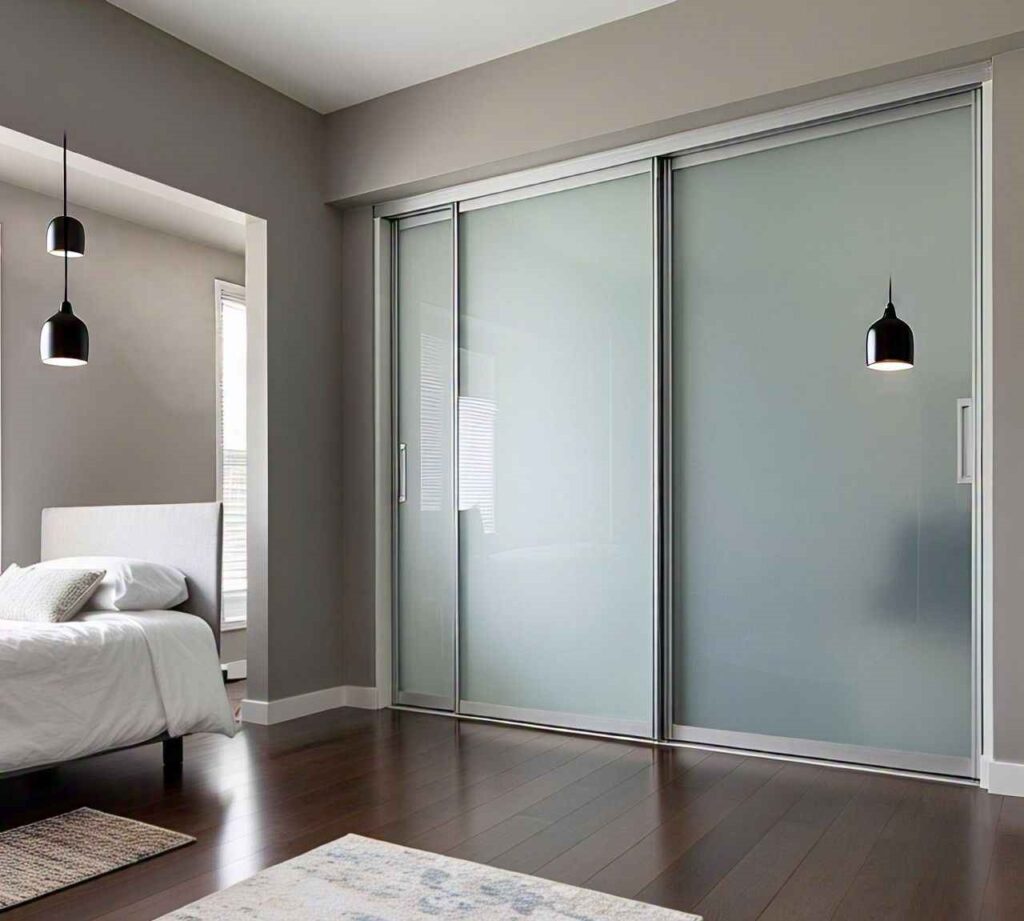
Ditch traditional lamps and go for pendant lights that hang from the ceiling beside the bed. Choose minimalist designs in matte black, white, or brushed metal. They free up surface space on nightstands and add a modern edge.
24. Open Shelving with Intentional Decor
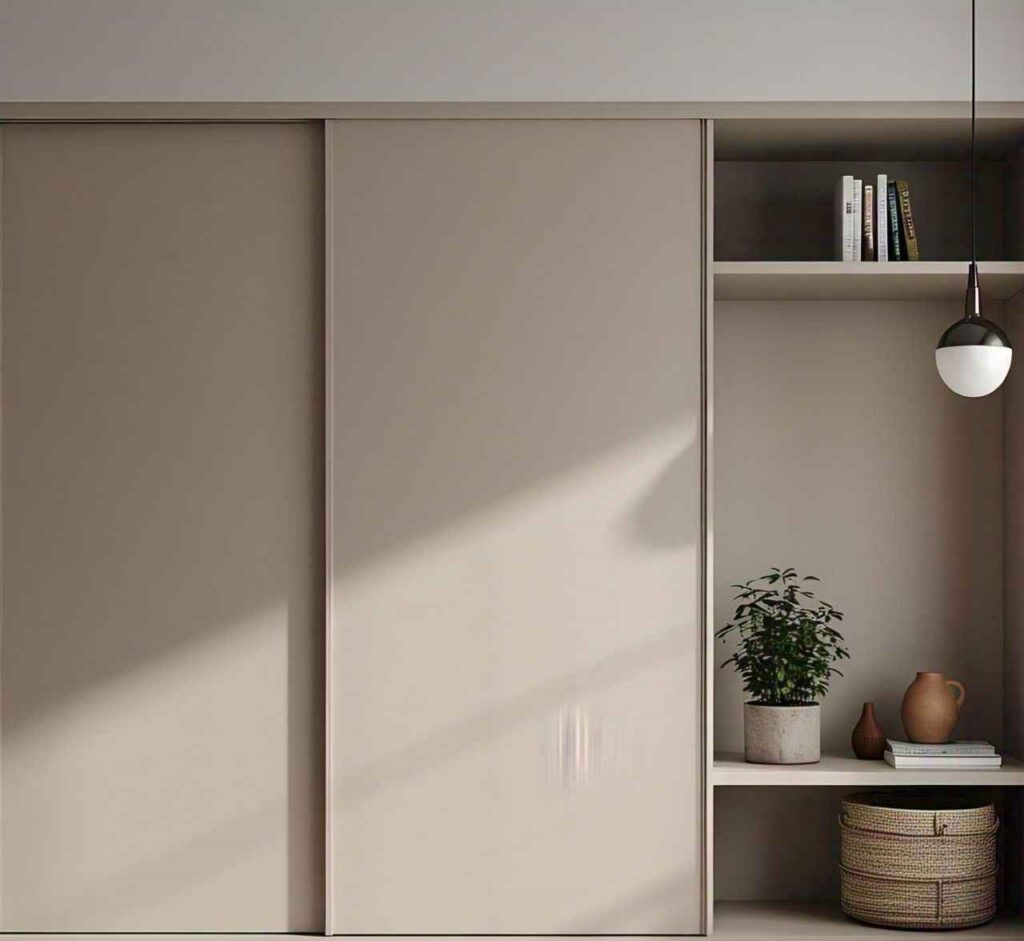
If you use open shelves, keep the décor minimal and purposeful. Stack a few books, place a small plant, or display one or two ceramic pieces. Avoid clutter by sticking to a monochrome or complementary color scheme.
25. Muted Patterns in Rugs or Bedding
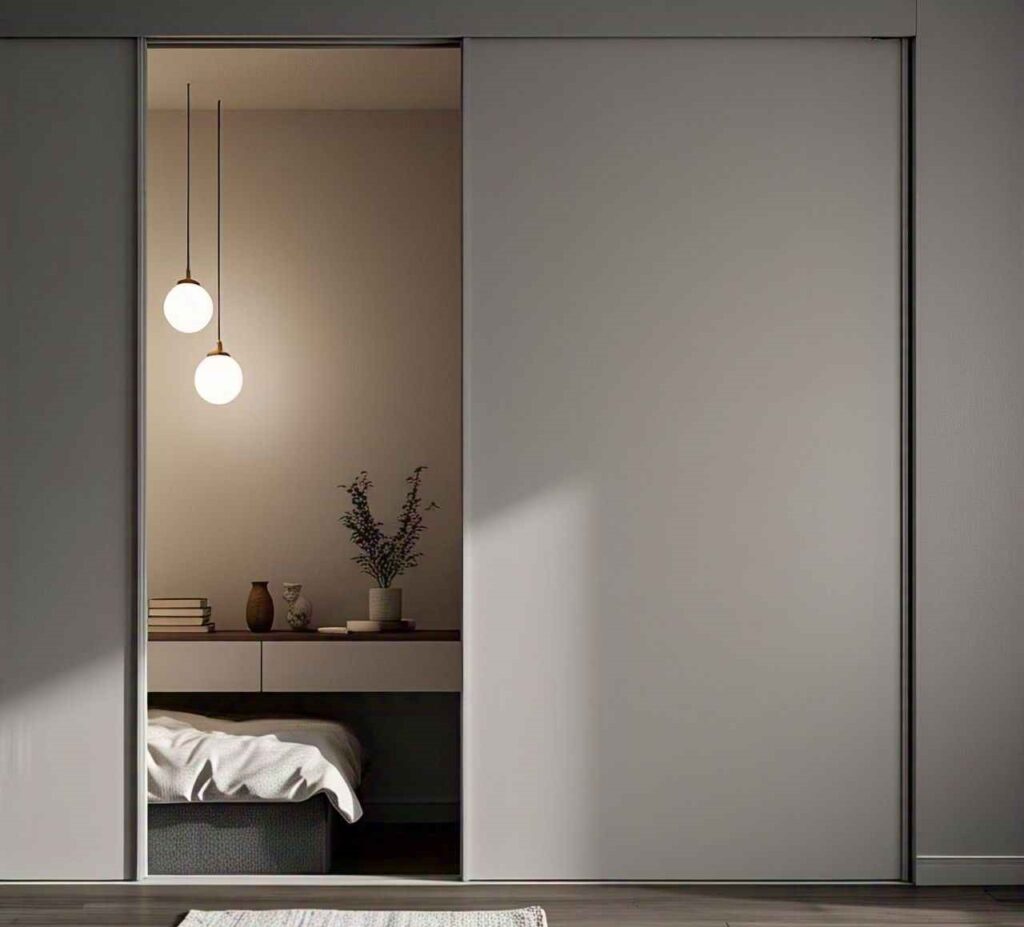
While minimalist décor usually avoids bold patterns, you can introduce very subtle prints in soft hues—like light gray stripes, tiny dots, or minimal geometric shapes. This adds a layer of detail without disrupting the calm aesthetic.
26. Minimalist Headboards
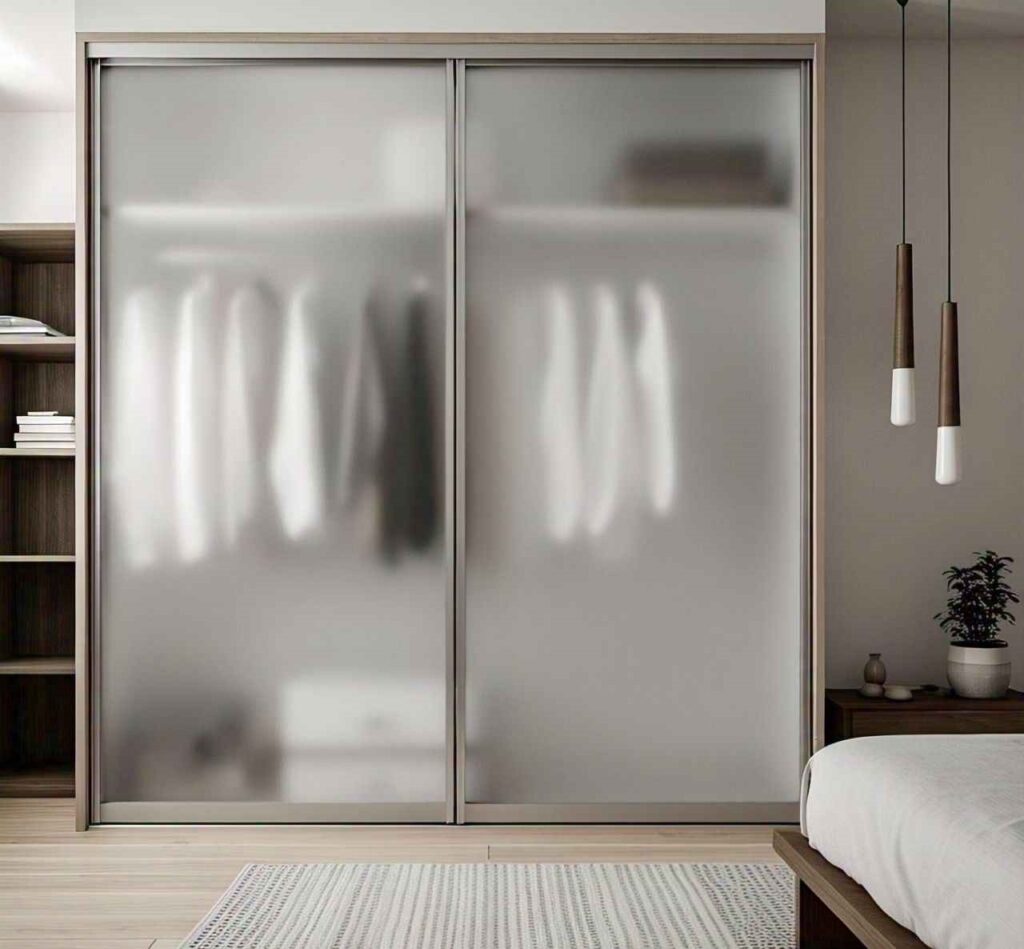
Opt for a sleek, simple headboard—like one in natural wood, fabric, or even a painted accent wall. Avoid tufted or oversized designs. A minimalist headboard keeps the bed looking grounded and cohesive with the room’s design.
27. Tone-on-Tone Styling
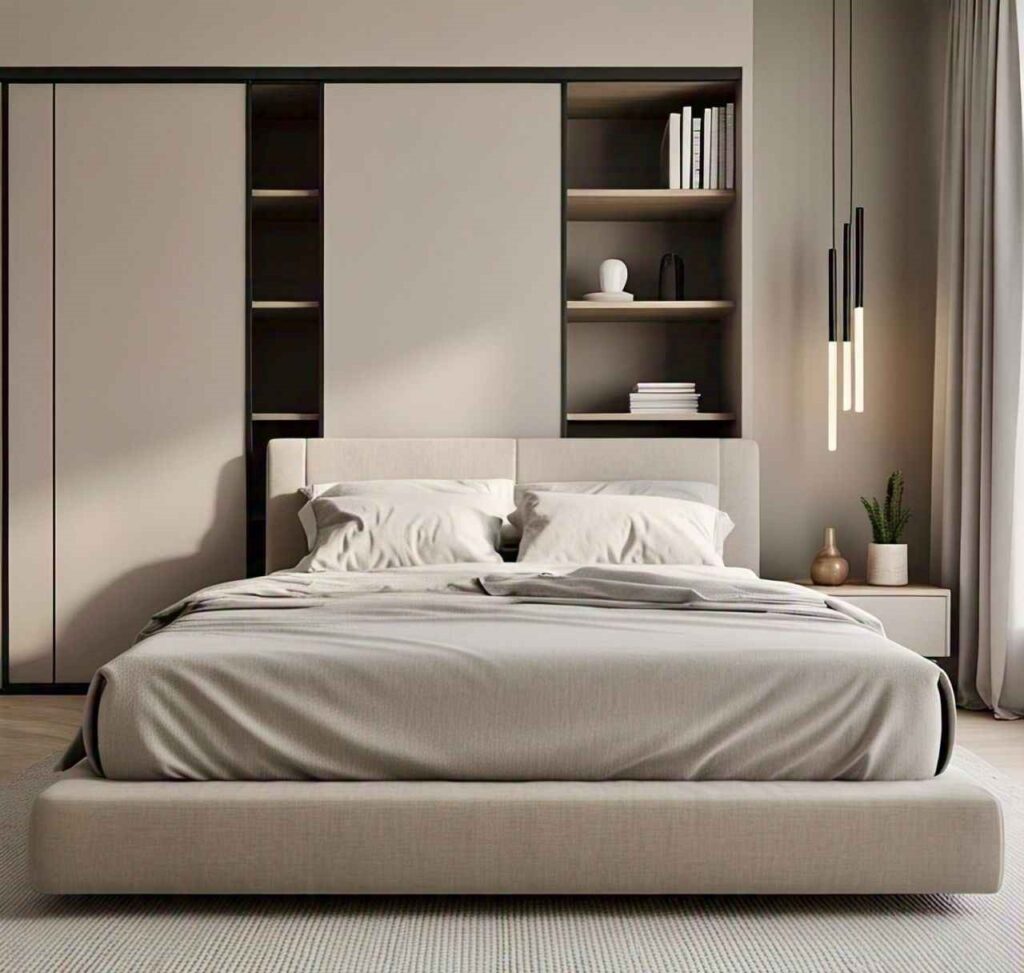
Layering shades of the same color can create depth while maintaining minimalism. Use varying tones of beige, gray, or off-white across your bedding, curtains, rug, and furniture. This approach adds richness while preserving a monochromatic, calm environment.
28. Integrated Bedside Lighting
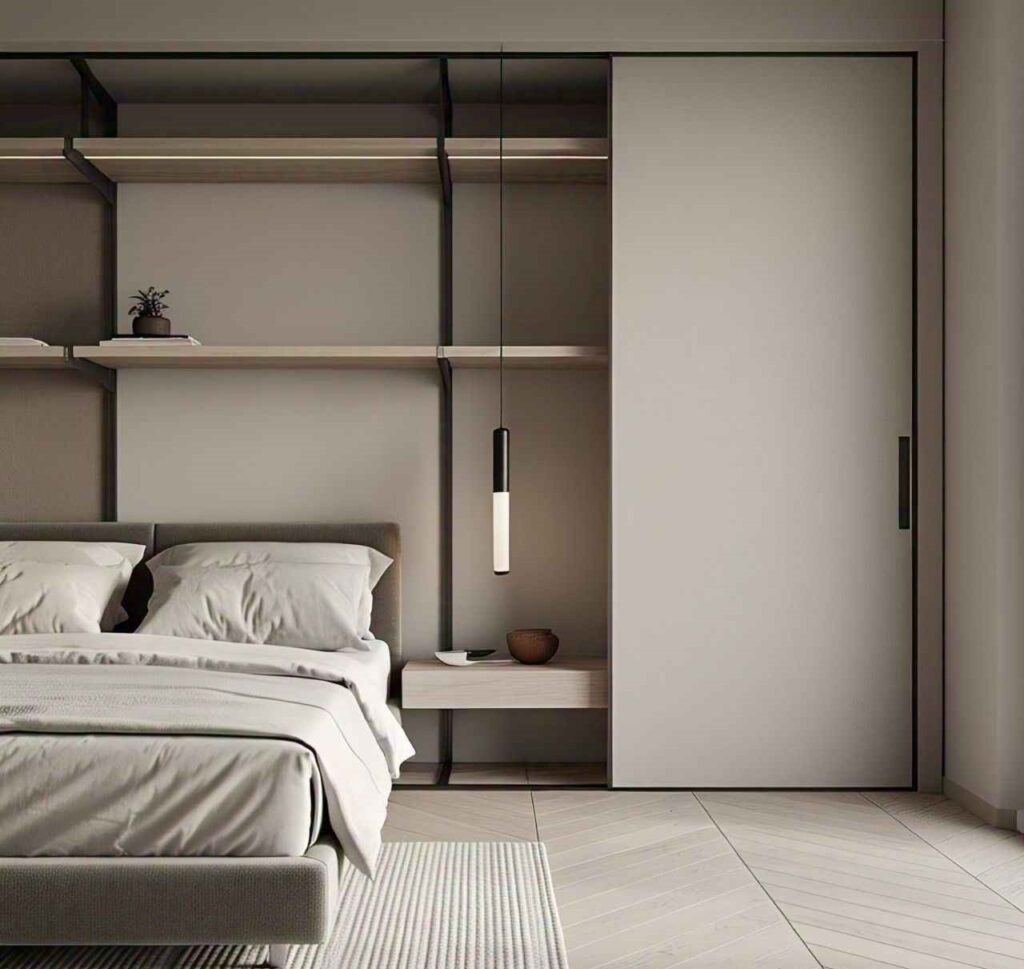
Wall-mounted or built-in bedside lights reduce the need for nightstand lamps and help keep surfaces clean. Choose designs that blend into the wall or headboard for a seamless, built-in appearance that enhances the room’s functionality.
29. Invisible Hardware
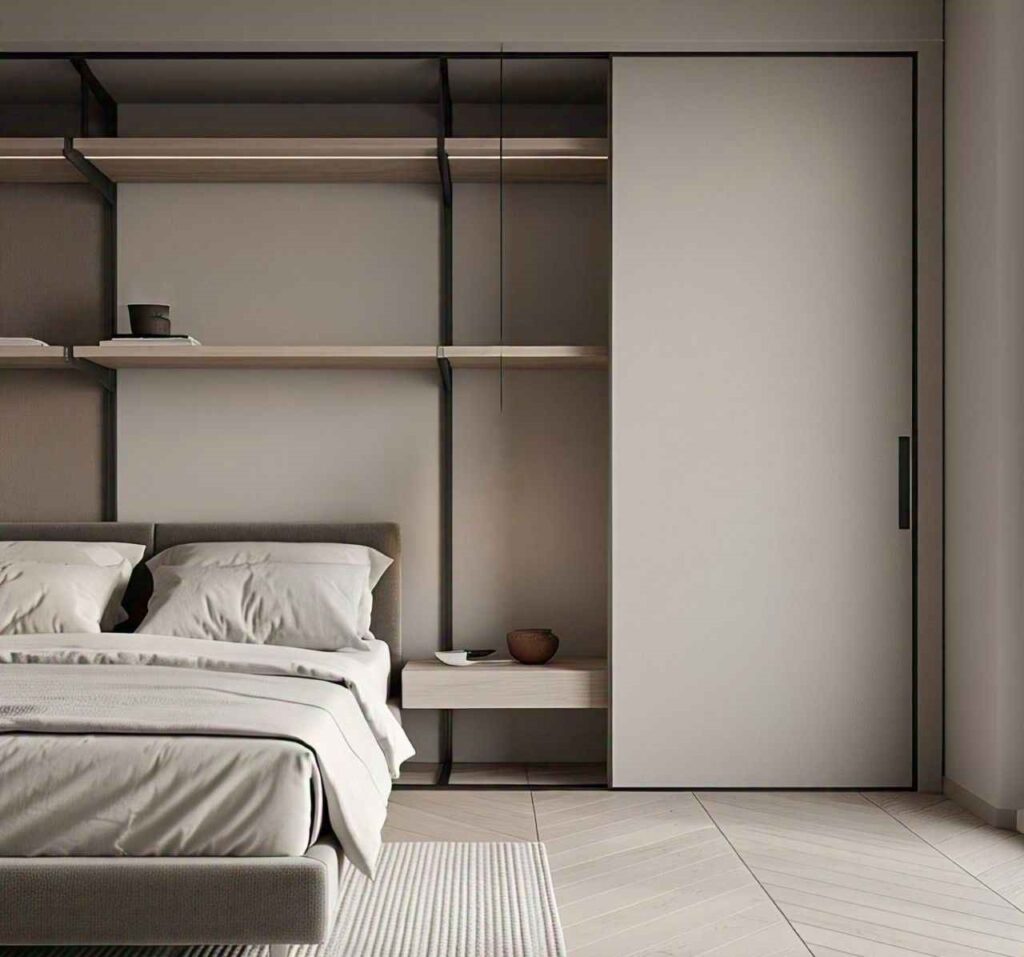
Choose furniture and cabinetry with hidden or minimal hardware. Push-to-open drawers or recessed handles give a sleeker, cleaner look. Avoid ornate knobs or metallic finishes that draw too much attention.
30. Intentional Negative Space
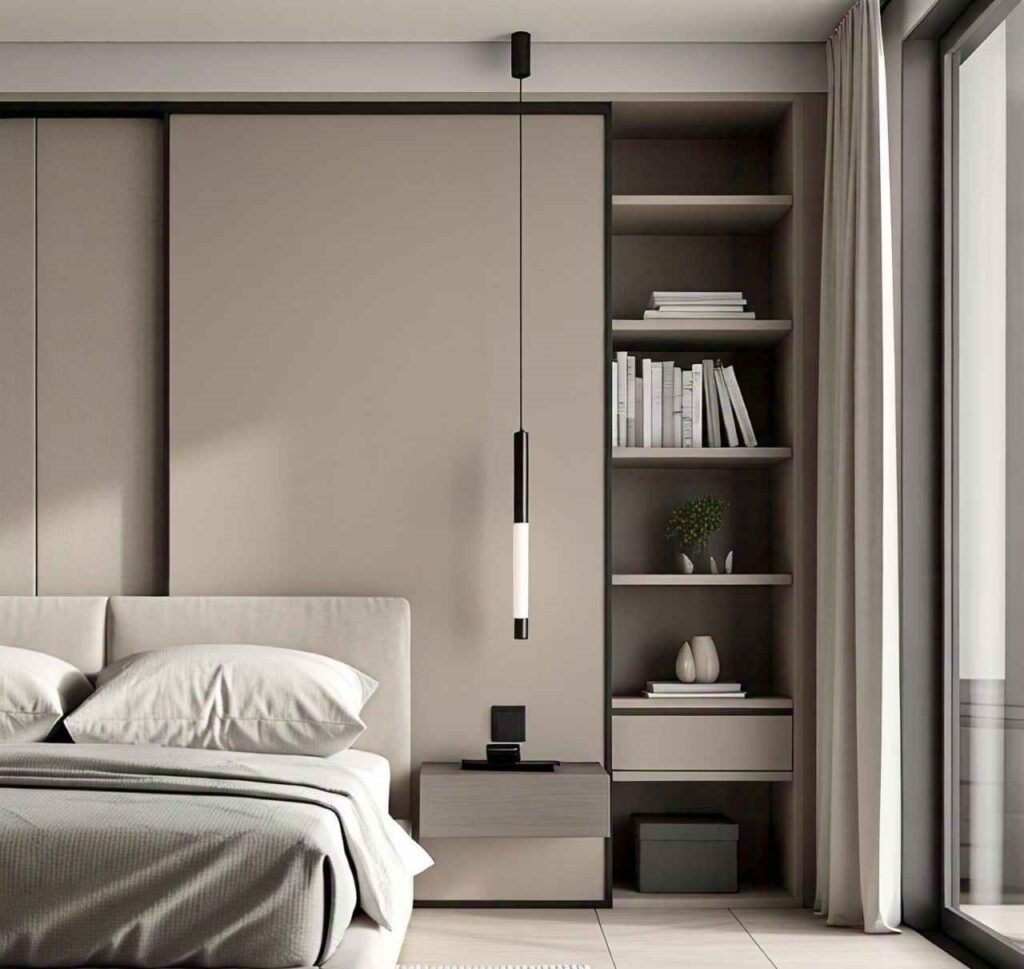
Don’t feel compelled to fill every inch of the room. Empty space is essential in minimalist design. Leave gaps between furniture, open areas on the walls, or a bare floor section. These quiet areas bring balance and clarity to the bedroom.










